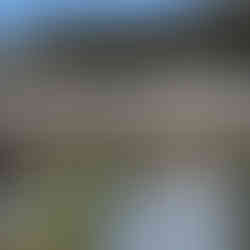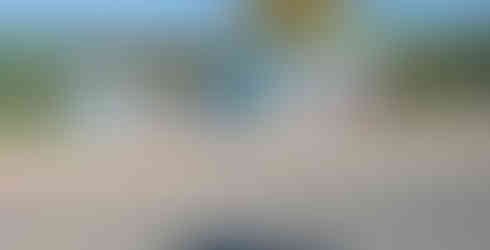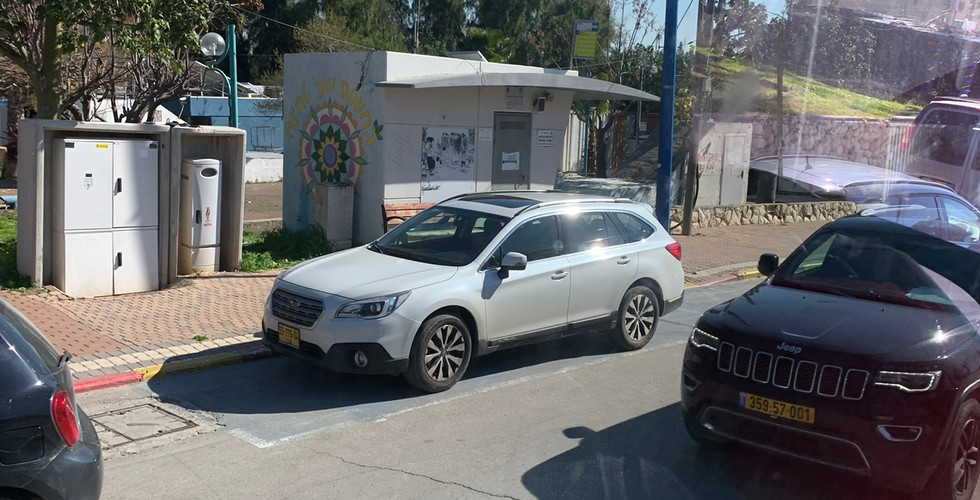On Gaza's Border: Art or Bomb Shelter?
- Laura Cofsky
- Feb 15, 2022
- 5 min read
“Do you see that painted wall back there?” our tour guide Efrat asks as we sit down on cold Jerusalem Stone. Behind her, in the distance, we see our first glimpse of the fence separating Gaza from Israel.
We nod.
“That’s a bomb shelter. If a missile comes in from Gaza, we’ll only have 10 seconds to run to the shelter. I don’t know about you, but I can’t run there in 10 seconds. So,” Efrat puts her hands behind her head, “if you hear the sirens start to scream tseva adom, you’re going to get down on your stomachs, on the ground, and put your hands over your heads. You won’t have time to run.”
The region of Israel right outside the Gaza wall is often referred to as the Gaza Envelope. Several cities in the Gaza Envelope, like Sderot, have had periods when they’ve been ravaged by bombs. But people work in these cities. They live in these cities. They raise children in these cities. Why, oh why, would they stay?
Many people, surprisingly, have lived on these lands for generations – even before Israel gained independence.
“I even feel a connection to the trees,” one of the inhabitants later tells me. His family has lived in this village for about a century, and he grew up on a local kibbutz. Nowadays, if a missile is fired at his village, people only have five seconds to take shelter. “If I leave, they win.”
There's also the attitude that if no one lives on the border, the frontlines will move to more populous places like Tel Aviv. And therefore, according to them, living in these places is patriotic.
(It should also be noted that Iron Dome, the Israeli defense system that is able to stop the vast majority of rockets, is so expensive to operate that, sometimes, Israel has to prioritize which areas will -- and won't -- be protected.)
The relationship between the Gaza Envelope and Gaza is tenuous. Every day, thousands of Gazans come into Israel to work. They pass through a checkpoint in the wall that you can see from the hills. Many residents in these communities personally know and even work with Palestinians from Gaza.
Gaza is quite poor, so applying for a job over the border can get very competitive. If anyone in Gaza protests the government, which is run by Hamas, they often risk torture or even death. You can read more about protests and poverty in Gaza here.
We go to Sderot for lunch and have delicious falafel at an unassuming storefront. The city is known internationally for being a target for bombs and missiles. But when you’re actually in the city, this is hard to remember. I walk by adorable coffee shops, trendy restaurants, a running trail, a large flea market where people shop for everything from strawberries and potatoes to cheap jeans and underwear. It’s a good reminder that people live here and are choosing to make the best of the situation.
The thing I find most striking is how the people of the Gaza Envelope have managed to integrate bomb shelters into every nook and cranny, so much so that many outsiders wouldn’t even be able to spot them. They’re the extra rooms added onto houses, the metal rooves, structures at a school.
They’re public art. The ones at the bus stops are whimsically decorated with flowers, geometric shapes, places, and even cartoon characters. One bomb shelter is painted with characters from Spongebob Squarepants.
After lunch we go to a playground. In Israel, many playgrounds are equipped with gym equipment for the adults. This one is no exception. Immediately, most of us run to the gym equipment.
“That’s what I was hoping you’d all do,” says Efrat. She then points out all the different bomb shelters.
There are two large caterpillars you can climb on and go inside. They’re both bright green. They’re bomb shelters. There’s also a little tunnel that’s decorated with paintings of Smurfs. That’s also a bomb shelter. Neither of them is well cared for. There’s what looks to be human feces inside one of the caterpillars. The Smurf tunnel is partially flooded.
Because adding a bomb shelter to your home increases your taxes – it counts as an extra room – some poorer families don’t get them, and instead depend on public shelters like the caterpillars and Smurf tunnel.
It’s sunny, so we continue to bask in the sun and climb on top of the caterpillars.
There are jingles that teach kids what to do when they hear tseva adom. They’re made extra cute to normalize the situation. Many children in these parts suffer from trauma. There are special therapy centers set up for them where they can seek traditional talk therapy as well as art and music therapies. There’s only so much that showcasing shelters as playthings and street art can do.
We drive along the Gaza Wall. We get so close we can even touch it (and do).

There’s an ongoing art project here called Path to Peace, started by an artist who felt helpless throughout the fighting. Visitors are invited to take beautifully crafted tiles and stick them to a portion of the wall with cement. You can even write little messages on the underside, to be hidden between the tiles and the wall. The wall is so full of these colorful tiles that we have trouble figuring out where to put ours.

Across the way, we see a structure where Israeli soldiers are stationed. They’re in charge of a large machine gun. They’re probably 20 years old. We’re aware, also, that on the hilltops we were constantly being watched by Hamas. I can’t help but hear the song “Every Breath You Take” play inside my head.
Every move you make Every step you take I'll be watching you
This thought feels perverse. But so does almost everything about this region. I know why people live here. But I don’t understand it. Then again, I’m not the best example – I feel no connection to New York City, the place where I was born and raised, despite the fact that everyone wants to move there. I’m currently living in another country even.
Across the border, in Gaza, people can’t just choose to leave whenever they want. They’re on a tiny strip of land bordered by the country they’re at war with and Egypt, the country that won’t have them (ironic, considering Gaza used to be part of Egypt), and they’re under a terrorist regime. Would they choose to stay, even after generations, if other options were offered? Since we don’t speak to Gazans during our tour, I don’t know.
At the end of the day, we walk away from the land of tseva adom to experience Darom Adom, a southern festival celebrating the red flowers that are currently blooming across the Negev (adom means red, by the way). I am in a sea of anemones. They’ll be here for a few weeks, a month. Then they’ll die, to be replaced by poppies. When the poppies die, they’ll be replaced by one more red flower species. It’s an annual cycle.


And to think, just five minutes away, is a bus stop with a bomb shelter.


























































Comments